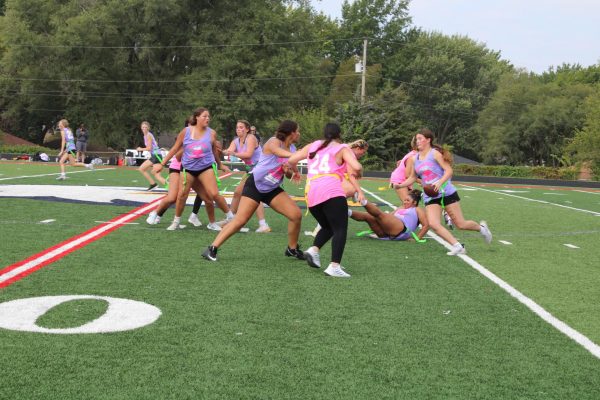The Truth About Fast Fashion
March 5, 2019
“90% off all jackets and tops!” “Buy-one-get-one-free premium denim jeans!” “Free coupons with every purchase!” Sales and cheap clothing can be extremely attractive, especially with clothes that are in style and almost free. However, these dirt-cheap clothes can come at a great cost for the environment and for poverty ridden societies.
When you buy that $8 hoodie from Forever 21 that was just too cute to turn down, you affect the earth in more ways than one. This epidemic is called fast fashion: trendy and cheap clothing, and it has some dire consequences.
Fast Fashion uses the cheapest fabrics possible to keep the prices low and the demand high, two common fabrics in fast fashion include polyester and cotton are two of the most common fabrics found in fast fashion, and neither are friends of the environment. According toPlastic Insights, more than 70 million barrels of oil are used to make polyester every year. Not to mention one kilogram of cotton uses 10,000 liters of water to be produced, according toThe Guardian.
According to The Global Fashion Agenda, if the fashion industry doesn’t change, the apparel industry’s climate impact is expected to increase 49% by 2030, with CO2 emissions projecting to increase to nearly 2.8 billion tons per year.
Fast fashion isn’t just bad for the environment. The work ethics of large fast fashion companies are questionable. Child labor is usually considered as an outdated and immoral source of labor that nobody would support in the modern day. According to the International Labor Association however; around 170 million children are being forced into child labor. In the fast fashion business, it’s all about the low-price tag. This forces companies to find the cheapest possible manufacturers, which are often severely underpaid children.
How do we combat the fast fashion industry and reduce the global impact of this industry? If demand decreases then manufacturing decreases as well, and right now demands are at an all-time high. According to the Elle MacArthur Foundation, In the past 15 years, the average number of times a garment is worn before it ceases to be used has decreased by 36% in America, this means that Americans are buying more, and wearing first hand items less.
In order to decrease demand, avoiding 1st hand cheap clothing stores is crucial. Instead of shopping at the mall every weekend with your friends, give thrifting a shot. When you go thrifting for clothing, you’re making the most out of clothing that has already been manufactured, rather than giving fast fashion stores more profit, which is more demand, which then leads to more manufacturing and harm to the environment.
Olathe North is home to many student thrifters. Senior Zoë Hayes is a thrifter at Olathe North, she says“I’ve been thrifting my whole life. I thrift for three reasons: the price, the environment, the style.” Zoëwent on to talk about some influencers who inspired her to start thrifting, “Annika Victoria is a YouTuber that I admire because she is an advocate for socially responsible thrifting.”
Freshman Sam Mahon is also an avid thrifter, stating that she prefers thrifting, “because it’s cheaper and you can still find some adorable things. Just because it has been used doesn’t mean it can’t be reused.”
Thrift stores can sometimes be hit or miss, but if you go with friends and spend some time at the thrift store, you’re destined to find some great items. Sam Mahon went on to say, “I definitely recommend going thrift shopping whether it is for clothes, decor for your home or room, toys for young ones, or even jewelry.”
So, which thrift stores should you hit, and which ones should you miss? Freshman thrifter Callie Brewer says, “I enjoy shopping at MAJ-R Thrift. I always find the weirdest little gems.”
Callie went on to say that she was introduced to thrifting at a young age by her Mother and that she thinks thrifting is not only cheaper, but more personal open minded since nobody else will have the same clothes as you.
Other popular thrift stores include Savers, Goodwill, and The Salvation Army. There are however many local thrift stores where you can find some awesome thrifted items and simultaneously help a local business. According to Narts.org, there are currently more than 25,000 resale stores in America alone.
You can’t stop the immoral labor techniques or the environmental dwell Fast Fashion is taking on the environment single handedly, but if more people start regularly thrifting we can certainly make a dent. The rise of thrifting is not only good for the environment, it’s also good for your wallet. Whether you’re a 35-year-old soccer mom, or a 16-year-old high school student, everyone can find some awesome items while thrifting with some time and commitment.



